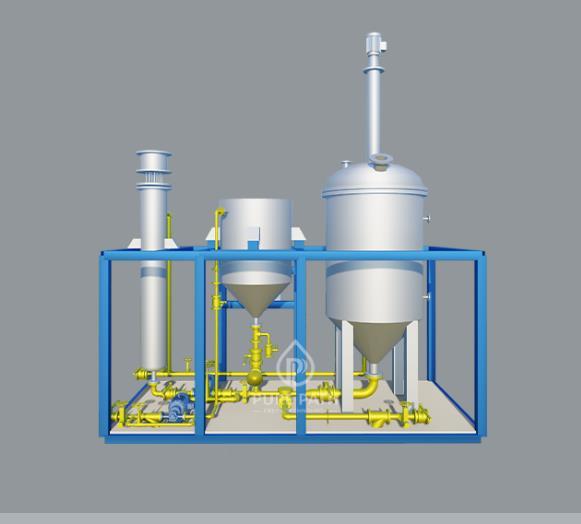Lube oil, also referred to as lubricating oil or lubricant, is a crucial element in ensuring the smooth operation and durability of engines and machinery across diverse sectors. The creation of top-notch lube oil requires a precise refining procedure, frequently conducted in dedicated facilities recognized as lube oil refining plants. This article will not only examine the intricate stages of lube oil refinement but will also delve into the vital elements and functions within lube oil refining facilities.
Feedstock Selection
The lube oil refining process commences with the careful selection of feedstock, primarily composed of base oils obtained from crude oil distillation. The choice of feedstock is crucial, as it significantly influences the properties and performance of the final lube oil product. Lube oil refining plants typically receive a variety of base oils, each with its unique characteristics.
Hydroprocessing
Hydroprocessing is a pivotal stage in lube oil refining, and lube oil refining plants are equipped with sophisticated units for this purpose.
Hydrotreating
This process involves mixing the feedstock with hydrogen gas and exposing it to a specialized catalyst at high temperatures and pressures. Hydrotreating effectively removes impurities like sulfur, nitrogen, and oxygen compounds, as well as undesirable aromatics.
Hydrocracking
In hydrocracking, the hydrotreated feedstock is subjected to even higher pressure and temperature conditions. This process breaks down larger hydrocarbon molecules into smaller, more desirable ones. It is essential for achieving the desired viscosity index and enhancing the performance characteristics of the lube oil.
Solvent Extraction
Solvent extraction is a crucial step to further purify the lube oil by eliminating any residual undesirable compounds.
Dewaxing: Dewaxing is a common solvent extraction method employed to remove waxes and paraffin compounds that can solidify at lower temperatures. This process ensures that the lube oil maintains its flow properties even in cold environments.
Distillation
Within lube oil refining plants, distillation is used to separate the lube oil into various fractions based on their boiling points. This separation process allows for the isolation of lighter and heavier hydrocarbons, contributing to the achievement of the desired viscosity and performance characteristics.
Additive Blending
In lube oil refining plants, specialized facilities are dedicated to the precise blending of additives into the base oil. These additives, including antioxidants, anti-wear agents, detergents, dispersants, viscosity index improvers, and pour point depressants, are carefully selected to tailor the lube oil for specific applications. The blending process is a critical aspect of lube oil production.
Quality Control and Testing
Lube oil refining plants adhere to strict quality control measures and testing protocols throughout the refining process. These measures include viscosity measurement, oxidation stability tests, and performance evaluations under various conditions. Quality assurance is paramount to ensure that the final product meets industry standards.
Packaging and Distribution
Once the lube oil meets stringent quality standards, it is packaged into containers suitable for the intended market. Bulk shipments are common for industrial applications, while consumer-friendly packaging is designed for automotive lubricants. Proper labeling, documentation, and tracking of product specifications are integral to compliance with regulations.
Conclusion
The creation of top-notch lube oil follows a meticulous sequence of actions, beginning with the choice of raw materials and concluding with the packaging and delivery of the finished product. These tasks are executed within specialized facilities called lube oil refining plants, each furnished with the essential infrastructure and machinery required for every phase of the refining procedure. Adhering to these exacting procedures, lube oil refining plants guarantee the formulation of lubricants possessing the precise viscosity, stability, and performance attributes. This, in turn, solidifies their role as a cornerstone in industries heavily dependent on machinery and engines.

